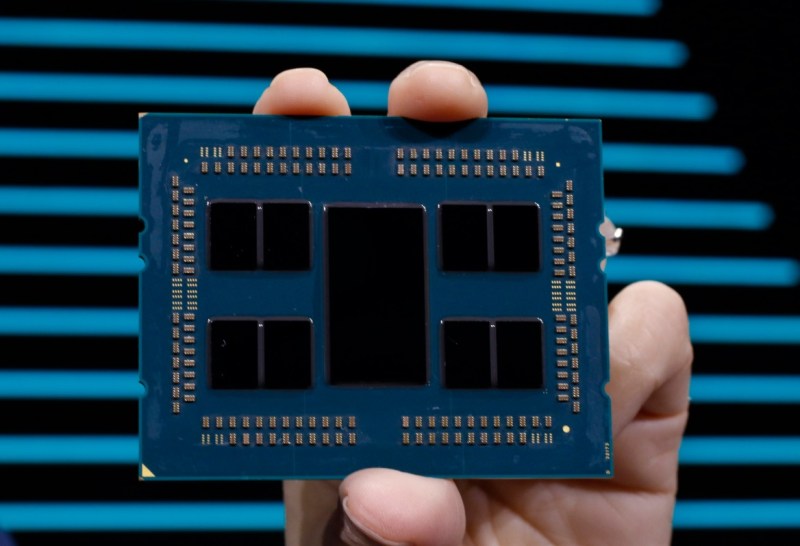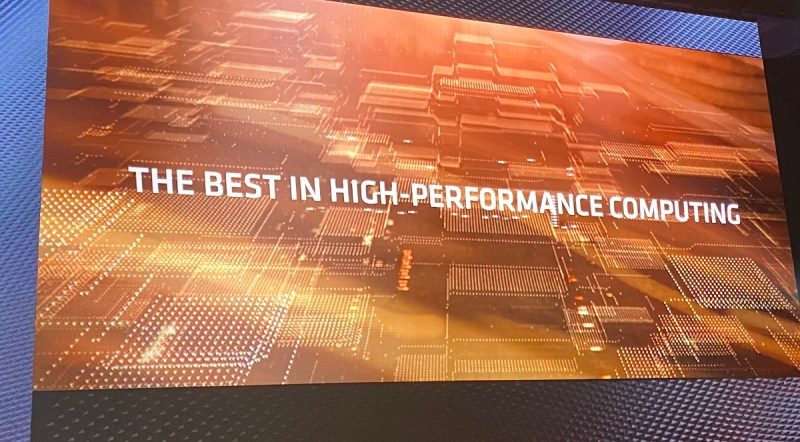Question: You might have seen a kerfluffle yesterday about Intel showing Acer with one of their Core i9s and an RTX 2080 in a laptop device, saying that AMD doesn’t have any devices out with an RTX 2080 inside. Can you say if any of your partners are planning to pair with super high-end graphics like RTX 2080?
Su: I may not have caught that particular kerfluffle, as you said. I’m not going to pre-announce designs from OEMs. I would say that you should believe that we are on a clear mission, and the clear mission is to have AMD in more premium designs, both consumer and commercial. That’s going to be a focus not just in 2020, but 2020 and beyond.
Question: Do you think real-time raytracing is going to have as big an impact in graphics as Nvidia says?
Su: I think raytracing is important. We’ve said that raytracing is important. If you look at where it is, it’s still in the very early innings. We’re investing heavily in raytracing, investing heavily in the ecosystem around that. Both of our console partners have also said that they’re using raytracing, and you should expect that our discrete graphics as well, as we go through 2020, will also have raytracing. I do believe, though, it’s still very early. The ecosystem still needs to develop. We need more games, more software, more applications to take advantage of it. But we feel very good about our position.
June 5th: The AI Audit in NYC
Join us next week in NYC to engage with top executive leaders, delving into strategies for auditing AI models to ensure fairness, optimal performance, and ethical compliance across diverse organizations. Secure your attendance for this exclusive invite-only event.

Above: Lisa Su shows off a Lenovo premium laptop with AMD chips.
Question: Do you think you have to have a competitor to high-end graphics? Is there going to be that high-end Navi part that people keep talking about?
Su: I know that those on Reddit want a high-end Navi. [Laughs] You should expect that we’ll have a high-end Navi. That’s something that’s important. The discrete graphics market, high-end gaming, is very important to us. You should expect that we will have a high-end Navi, although we don’t usually comment on unannounced products.
Question: There have been stories about TSMC lead times increasing. We recently had a quote from Mark about the ability to predict how many wafers you need in advance. Can you speak to how AMD will approach its partnership and its orders with TSMC through 2020?
Su: You heard me say that we now have 20 products in both production and development. We have bet big on 7nm at TSMC. We have a great relationship with them and they’ve supported us well, but wafers are tight. From our standpoint, it’s about ensuring that we get that prediction of what the demand will be early.
You’ll see, in our desktop product lines — when we first launched the third generation Ryzen, there were some areas where we stocked out at the high end, particularly on the 3900 and 3950X. You’ll see now that they’re readily available through retailers. It’s a just a matter of, when you’re early in the cycle, making sure that you call it correctly. That being the case, the technology is operating very well and we’re pleased with how 7nm has ramped for us.
Question: You’ve already spoken about how Zen 3 will be on 7-plus. Does that help the situation any more, given that some of your product will shift over to a process that’s slightly different?
Su: It’s fair to say that 7nm shares a lot of technology. Whether you’re talking about 7nm or 7-plus, they use a lot of the same technology. The main thing is just to make sure we forecast well and plan for success. Certainly that’s what we’re doing.
Question: Threadripper 64, is there a limit to how far you can push core count in a consumer part?
Su: For third generation Threadripper, I think 64 cores is the limit. When you go from 16 to 32 cores, the scale is actually quite good. For multithreaded applications you see the scaling is quite good. When you go up to 64 cores, there is a bit of overhead, and you don’t see quite the same scaling. We believe that will get better with optimization. People don’t realize what you can do with 64 cores. The work we’re doing right now with the ecosystem is to make sure they’re able to use all these cores. We love seeing new applications. We love working with some of the ISVs and trying to optimize that capability.
Question: AMD used to have an Arm program with Seattle and K12. Arm is approaching the high performance server space with a promise of 25% year on year performance increases, which is beyond AMD’s predictions of their own performance. Is there a time when AMD will work with Arm again?
Su: We do work with Arm in some of the microcontrollers, some of the controllers we have in our products. From a server standpoint, we are not investing in Arm at this point. We think there’s a huge market out there for x86. I think ARM has a market, and ARM has good capability, but we think that from our standpoint, the focus on x86 is the right thing to do. There’s a lot more we can do in the datacenter. That’s our plan, going from the second generation of Epyc and beyond.

Above: AMD’s new Threadripper costs $4,000.
Question: If you look at the whole industry, what do you think of RISC-V? Not as a particular AMD interest, but the development and appearance of RISC-V as a challenger.
Su: There will be those who will use RISC-V. They’ve seen some good momentum. Our focus is very clear. It’s all about high performance computing. For that, x86 is the leader.
Question: Getting back to the ton of money Intel has sunk into mobile technologies, working very deeply with a lot of vendors, is AMD also going to spend the amount of money Intel has to build that mobile ecosystem?
Su: The way to think about it is that the technology is the key. The performance of Ryzen mobile is significant. Now, will we work on the ecosystem on how to optimize panels and other parts? Yes, we will do all of those things. But I think the ecosystem is changing. This idea that someone is going to define what the next generation laptop is going to look like, I just don’t think that’s going to be the case.
You see what Microsoft is doing. You see what Dell and HP are doing. They have their own ideas about what the next generation form factor will look like. We’re going after the volume pieces of the market. From that standpoint, the fact that we’re able to move up the stack and introduce Ryzen 4000 series across ultrathins, the H series, as well as commercial, I think we have plenty of opportunity to grow. That’s certainly our intention.
Question: Do you think Intel has a shot at getting its act together on manufacturing, and that eventually becomes another threat to deal with?
Su: Let me say it this way, because you’ll have to ask them about their technology. We never build a road map expecting that someone else isn’t going to meet their road map. We built this road map now over the last five years, extending to the next five years, assuming that our competition is going to be extremely good. We’ve made some good choices, and this is all about making choices at the right time. Where do you bring technology to what market, and in what order? How do you do that? We need to continue to do that. That’s our key.
I’m expecting that we’re going to have very stiff competition, whether you’re talking about process technology or architecture or packaging technology. I’m also expecting that we’ll do quite well. That’s our job.

Above: AMD is hoping for a victory lap in 2020.
Question: Speaking about road maps, AMD’s lead products have been on a 12-month, 14-month cadence for the last three years. We’re expecting to see Zen 3 this year. In previous years you’ve given out four-year road maps, and you didn’t this year. You spoke about some of the Q1 and Q2 stuff. Can you comment on Zen 3 and what’s coming?
Su: You should expect that we’re going to be very aggressive with the CPU road map. We think Zen 2 is the best CPU core out there today. We’re very proud of it. We’ve completed — let’s call it the family. Zen 3 is doing very well. We’re very pleased with it. You’ll hear more about it in 2020. You will see Zen 3 in 2020, let me be clear.


